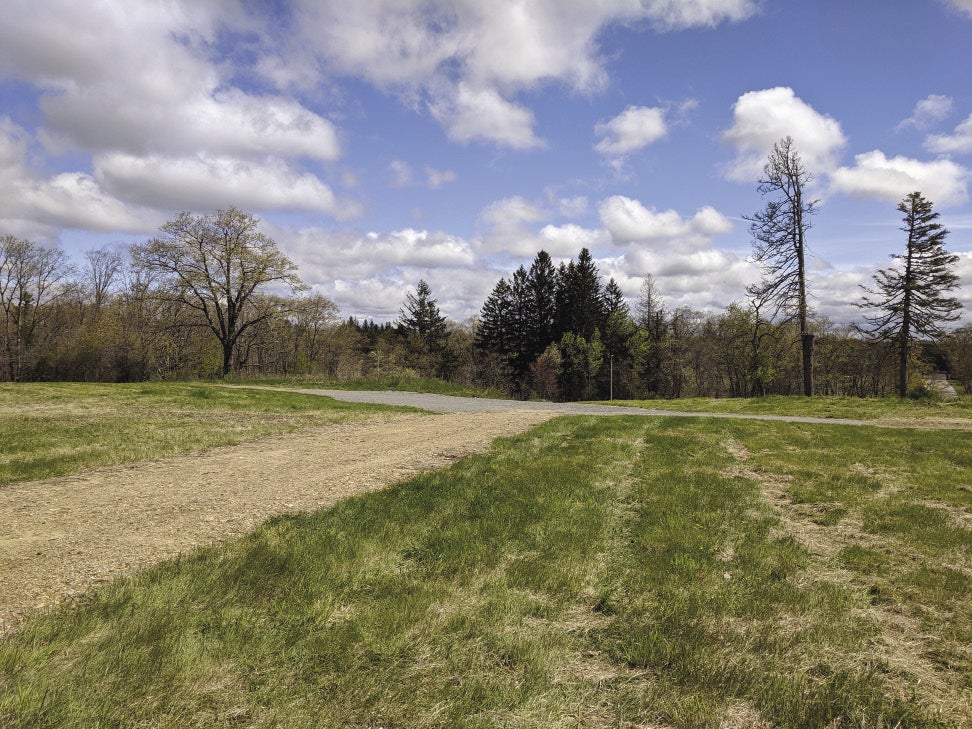Rutland has seen its population jump past 9,000, up nearly double since 1990. The town is ready to pump the brakes a bit on that growth, voting in May to cap the number of new housing permits per year.
But Rutland leaders are eager to see development take place on one site: an empty hilltop just south of the town center where the former Rutland State Hospital once stood.
Town officials are looking to bring useful life back to the 88-acre site, which is zoned to accommodate denser development than could be built elsewhere in town, and a quicker path to construction.
“Someone could come in and start digging and have a building up in six months,” said Michael Sullivan, the chairman of the Rutland Development & Industrial Commission, which has permitting oversight for the site.
Called Rutland Heights, the property off Maple Street was first used in 1895 as a hospital for tuberculosis patients and starting in the 1920s was a 350-bed Veterans Affairs hospital. It was used in its final decades as a state addiction treatment hospital, before closing in 1991.
The complex of brick buildings sat vacant for years until it was demolished in 2005, and the site cleaned of any contaminants. Old water and sewer lines were replaced, and roads were repaved, making the site more attractive for reuse.

The town bought the site in 2012 for $456,000. Past efforts to seek development proposals were not fruitful.
Town officials have said they envision potential office or assisted living uses but don’t have a particular preference. The request for proposals prioritizes a project’s compatibility with the surrounding neighborhood, as well as tax revenue.
Finding right amount of growth
Town officials say they’re looking for new opportunities at Rutland Heights while putting into place restrictions for growth elsewhere.
Town Meeting voters in May put a cap on the number of new housing units that could be approved to just 36 in each of the next five years. The new bylaw, which makes an exception for over-55 housing, is an attempt to reign in growth worrying some residents about a strain on the school district or other town services.
The town – whose population has grown by 14% since 2010 – issued 50 new housing permits in 2017.
At the same time, officials are eager to see the former hospital site be returned to productive use and bring in new tax revenue and jobs.
“We’re very open to ideas that we get,” said Michael Nicholson, the Rutland town administrator.

A fiscal need for more commercial growth is clear. Only 2% of the town’s assessed property value is commercial property, leaving homeowners to shoulder virtually all of the cost of town services.
Rutland Heights’ location makes it a potential draw for retail use, which otherwise doesn’t exist in any large scale in town.
The nearest grocery stores are in Holden or Worcester, and the only pharmacy in town is a small pop-and-pop operation, Rutland Pharmacy.
Two Dunkin’ locations operate in town, but no McDonald’s or other chains perhaps wanting to take advantage of the town’s growing population and a dearth of shopping options within a close drive.
The Rutland Heights property sits roughly 20 minutes from I-290 and I-190 but around a half-hour from the Massachusetts Turnpike.
Any new development at Rutland Heights will be joined by a six-megawatt, 21-acre ground-mounted solar panel array to be built to the south and west edges of the site on what’s now wooded, sloped land otherwise buildable.
Other hospital sites finding new use
Rutland would be the latest Central Massachusetts community to find a new use for a former state hospital.
The old Worcester State Hospital was largely destroyed by a fire in 1991, and the rest of the building was demolished in 2008. The Worcester Recovery Center and Hospital opened in 2012 on roughly the same footprint.
The rest of the site is just beginning to be redeveloped now.
The eight-story Bryan Building closer to Belmont Street is being demolished with $15 million in state funding to help make way for WuXi Biologics, a Chinese biotech company planning a $60-million facility.
Much of the rest of the site, which still includes the Hale Building and a series of smaller vacant cottages, is being eyed for a biotechnology park to take advantage of its site next to UMass Medical School and the related UMass Medicine Science Park.
Roughly 44 acres have been given to the Worcester Business Development Corp. to help spur new growth at the former state hospital.
The former Westborough State Hospital, which closed in 2010, is being developed into a 700-unit 55-plus apartment community called Del Webb Chauncy Lake.
The first units are expected to open in December.
In Grafton, the town said earlier this year it’s looking to sell nearly nine acres of the former Grafton State Hospital, which sits within walking distance of the Grafton commuter rail station and Cummings School of Veterinary Medicine at Tufts University.
The town said it’s looking to have multi-family market-rate and affordable housing built on at least a portion of the property, which closed as a hospital in 1973. A portion of the site has been used by Cummings and the Grafton Job Corps Center.
In Rutland, only two components of the old state hospital still stand: a brick gatehouse at the entrance from Maple Street and a flagpole in what’s now an open field.
“We didn’t have the heart to take it down,” Sullivan said.

